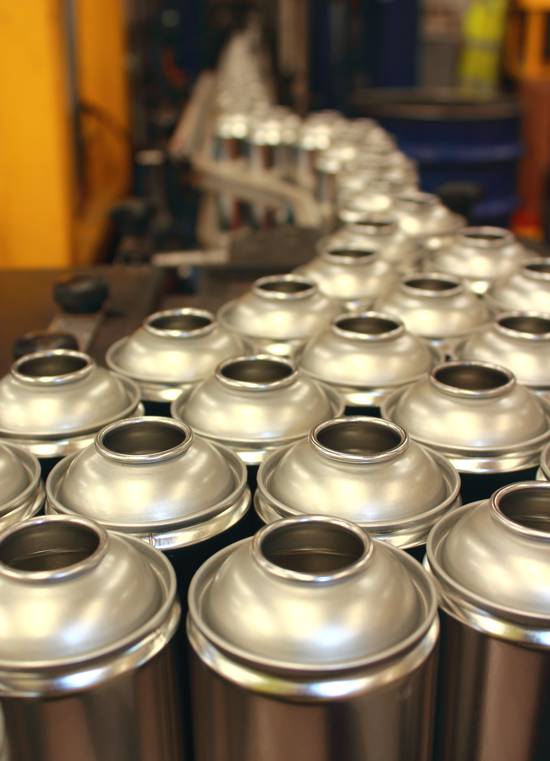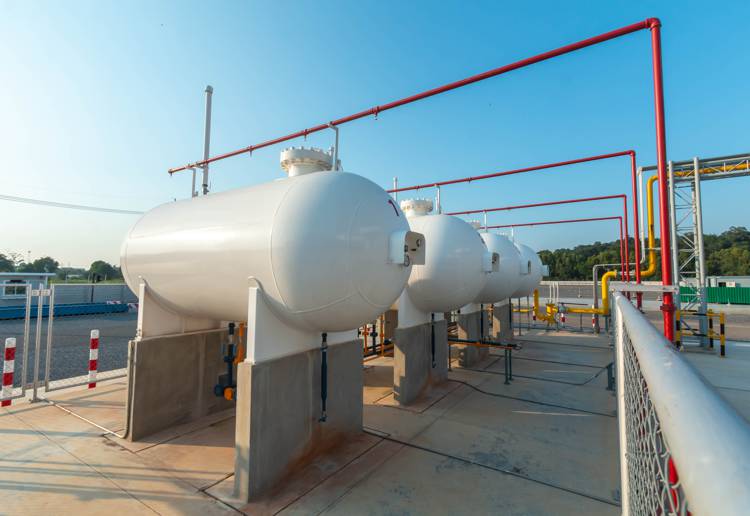The majority of aerosol products currently available on the market contain Liquefied Petroleum Gas (LPG), normally a mixture of butane and propane, as the propellant to provide pressure in the aerosol can to allow the product to be dispensed. LPG is used because, at atmospheric temperature, the vapour pressure is at the right level for efficient and effective spraying of product from the aerosol. The issue with use of LPG is its flammability.
Aerosols are Pressurised Containers and the majority comprise an Extremely Flammable Propellant - LPG

Given the vast number of aerosols (containing LPG propellant) that are sold and used annually the safety record of the aerosols industry is extremely good, thanks to close scrutiny of potential hazards in the manufacturing operations and application of rigorous control measures to ensure that potential fire and explosion hazards in the manufacturing processes are well controlled. In relation to this there is detailed guidance from the British Aerosol Manufacturing Association (BAMA) providing recommendations for industry best practice to ensure safety.
A typical aerosol manufacturing facility will have bulk storage facilities for both LPG on site, and may store highly flammable liquids in bulk as well (if such liquids are used in the products). Potential fire and explosion hazards exist where there flammable materials are stored.
Furthermore the aerosol manufacturing process may require product bases comprising highly flammable liquids to be prepared, and the filling and gassing of aerosols requires flammable materials to be handled within filling machine enclosures.
Finished products (gassed aerosols) may need to be stored on site (e.g. awaiting dispatch) and may be stored in large quantities in distribution warehouses. Large pallet loads of gassed aerosols represent a significant fire load within a building and a unique challenge for fire protection systems given that, if involved in a fire, aerosols will burst, releasing their flammable contents, and creating high velocity projectiles (metal fragments) that will pose a significant hazard to personnel and fire fighters. In the event of a fire, rocketing cans may trail burning liquid allowing fire spread to other parts of the storage area, hence secondary seats of fire, which may over tax conventional fire protection (sprinkler) systems.

Many aerosol manufacturing facilities and designated aerosol warehouses will handle Dangerous Substances (primarily LPG) in sufficient quantity to fall under the requirements of the Control of Major Accident Hazards Regulations (COMAH).
In order to ensure an acceptable level of fire and explosion safety in aerosol manufacturing operations, and for compliance with legal requirements under DSEAR and COMAH, it is essential that operators of sites where aerosols are manufactured and / or stored / handled commit to detailed and rigorous risk assessments to identify and characterise potential fire and explosion hazards, appreciate the potential consequences of these (in terms of threat to both people and assets) and ensure that suitable and sufficient control measures are in place.
Strict adherence to the BAMA guidelines goes a long way to achieving this goal, but each process still needs to be considered on its merits to ensure that all possible eventualities have been addressed.
Our consultants have detailed knowledge of aerosol manufacturing processes through provision of loss prevention consulting services to leading aerosol manufacturers. This has allowed our consultants to keep abreast of the latest developments in the industry, relating to product and manufacturing safety, and to provide definitive advice on requirements for safe operation and legal compliance.
We have been engaged on numerous occasions by BAMA for assistance on aerosol safety related projects and research, including application of DSEAR to manufacturing and logistics facilities, safety in development of new manufacturing processes, safe handling of aerosols in waste streams, assessment of fire and explosion hazards in large warehouses holding gassed aerosols in large quantities, and incident investigations.
Over the years we have been involved in fundamental research in relation to the behaviour of gassed aerosols in large and small scale fires, providing us with unique insight for the assessment of aerosol fires in warehouses, including modelling of rate of fire growth, rate of smoke generation and time to flashover.
We have also been involved with investigation of production line issues involving leaking aerosols and have assisted in the development of effective leak detection systems and strategies, commensurate with the ever increasing production rates on modern lines.